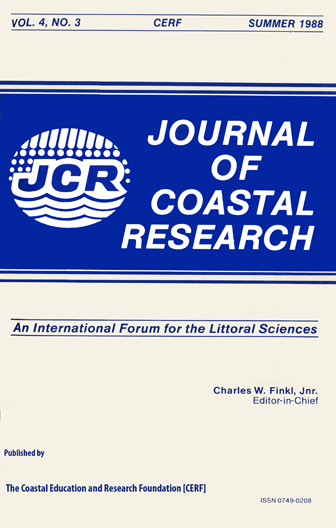Seasonal Changes in the Phosphorus-Iron Geochemistry of the St. Lawrence Estuary
Keywords:
Phosphorus, iron, geochemistry, St. Lawrence estuary, suspended particulate matter, marsh erosionAbstract
The phosphorus-iron partitioning is studied on suspended particulate matter, sampled from October 1983 to May 1985 in the St. Lawrence Upper Estuary. The ratios of the iron hydroxides (FeCDB) to the inorganic non detrital phosphorus (PCDB) show four different mean values, grouped as "modes", Each mode characterizes a process involving either precipitation of iron with incorporation of P ("flocculation"), release of P during reductive destruction of iron oxides ("desorption"), stasis in the salinity gradient ("equilibrium"), stasis in the freshwater upstream ("fresh water"). Phosphate adsorption actively takes place in the low brackish water of the South Channel. On the other hand, phosphate desorption only occurs via exchange of particulate matter with surrounding marshes. The intense fall erosion of the Cap Tourmente flats by migrating geese represents the major annual input of phosphate-depleted suspended particulate matter to the estuarine mixing zone. The kinetics regulating the subsequent phosphate readsorption appear to be fairly slow.


